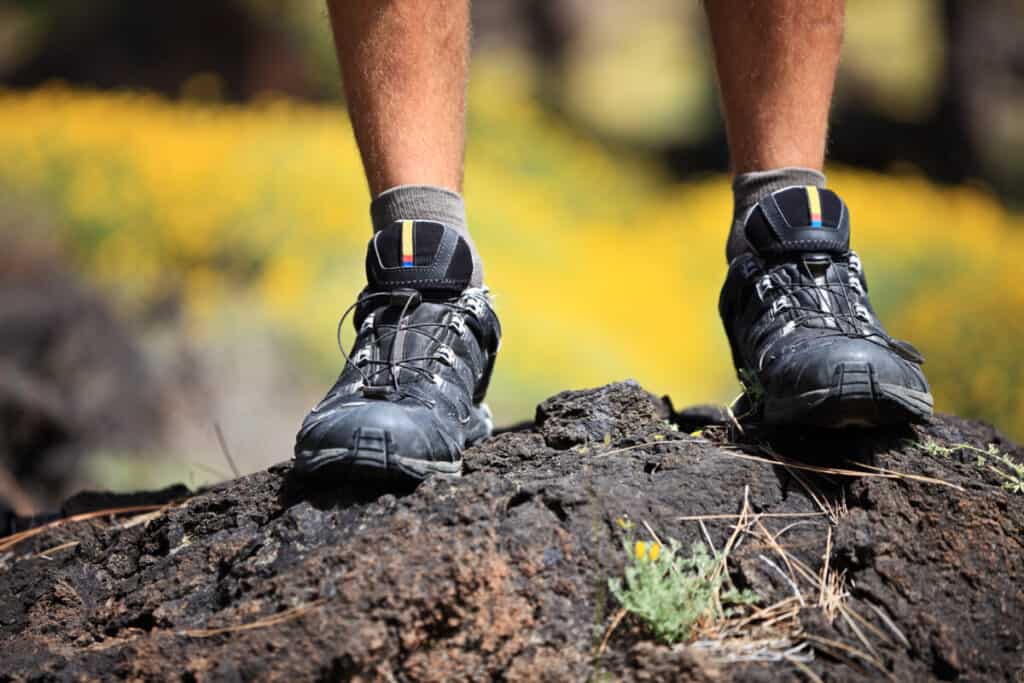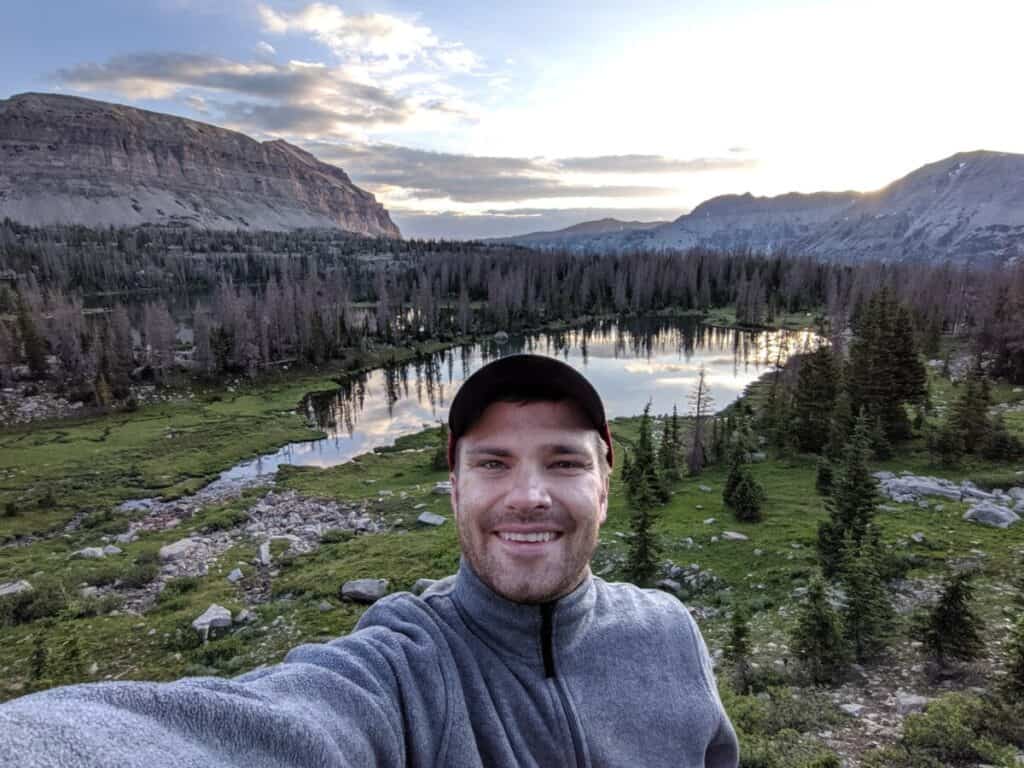Backpacking trips are different than day-hiking trips, and one of the biggest things to consider is what to pack. Socks are very important on any hiking trip but can be a crucial item when backpacking for multiple days. The temptation is to bring as much as possible, but remember, you have to carry everything you bring, so how many socks should you put in your pack?

The ideal number of pairs of socks to bring on a backpacking trip is 3, and the minimum is 2. Always have at least one extra pair of socks for a backpacking trip in case they’re needed. Socks are small and don’t weigh much (about 2 oz), so an extra pair is good to have in the pack even if it turns out you don’t use them.
Packing for a multi-day backpacking trip is one of the most challenging aspects of the whole adventure. Everything you bring has weight and takes up space. It’s very easy to overpack and it’s also very easy to under-pack. Luckily, when it comes to the question of socks, the answer is pretty clear. Unless you’re an ultra-light fanatic, the case for bringing an extra pair of socks (or two) is strong.
By the way, as an Amazon Associate, I earn when buying qualified products through links on my site.
The Ideal Number Of Socks To Bring Backpacking
Even if you’re backpacking for only a single day, the ideal number of socks to bring is 3. 2 is acceptable if you have high performance socks that don’t need to be layered to prevent blistering.
It’s common practice to wear two pairs of socks while hiking (although some use dual-layer socks or a single pair of high-performance socks instead) to reduce friction, and having an extra pair of socks that you aren’t wearing at any given time is a great safety measure.
How Many Pairs Of Socks Do Most People Bring?
I feel a bit validated–I decided that 3 was the magic number, but I was curious what others thought, so I asked a group of over 50 backpackers and hikers how many pairs of socks they bring for a 3-5 day backpacking trip and I got this response:
| Pairs Of Socks | Respondants |
|---|---|
| 1 Pair | 1 |
| 2 Pairs | 26 |
| 3 Pairs | 18 |
| 4 or more Pairs | 10 |
So, 47% of people bring 2 pairs of socks, while 32% bring 3 pairs of socks. Some people only bring 1 pair, and one gentleman admitted to bringing 7 pairs–but most commonly people bring 2.
So if you bring 2-3 pairs of socks while backpacking, you’re in good company!
Reasons To Bring More Than One Pair Of Socks Backpacking
Ultralight backpackers have a saying:
Every Ounce Counts
Some ultralight backpacker at some point.
How far does this saying go?
I wish there was another saying for ultralight backpackers:
“You don’t know you don’t need it until you’ve hiked 100 miles without using it in all seasons.”
Peter’s made up quote.
Let’s look at some of the strongest reasons for taking another pair of socks.
Socks Are Light
I recently took the trouble to ascertain the actual weight of a typical pair of hiking socks. For the record, I used several pairs of merino wool socks of varying sizes, and one pair of thin synthetic liner socks to get an overall picture of their weight. I used a small food scale that is typically used to get exact measurements for, say, a tricky baking recipe. It is accurate down to an eighth of an ounce!
How Much Do Hiking Socks Weigh?
Here are the results:
| Type of Sock | Weight |
| Knee-High Wool (thick) | 4.0 oz |
| Mid-Calf Wool Hiking Sock (thick) | 2.1 oz |
| Mid-Calf Wool Hiking Sock (thin) | 1.9 oz |
| Ankle-High Wool (thick) | 1.7 oz |
| Mid-Calf Synthetic (very thin) | 1.5 oz |
As you can see, even if you carried all five of these in your pack, they would only weigh a grand total of 11.2 ounces or about the same as two lemons (Yes, I happened to have a lemon right there, so I weighed it too). Unless you’re trying to set a speed record for a particular hike, this is not an amount of weight that will do you any harm.
I admit, this weight does add up. I wouldn’t recommend taking the whole sock drawer, but the point is that 5 pairs of socks (which is excessive) still doesn’t weigh very much.
Unpredictable Weather With Large Temperature Ranges
The table above includes a few different varieties and thicknesses of socks.
Story time!
Let’s assume for the sake of this article that you are going on a 3-day backpacking trip in July in the Rocky Mountains of Colorado. Day one of the trip starts bright and sunny, and even a little hot. You opt for your thinnest pair of socks, but as you begin your hike, you notice that clouds are starting to form.
Higher still, the sunshine is gone, and the clouds are looking a little mean-spirited. What’s worse, you’re above treeline now, and the wind is picking up. In high mountain areas such as these, it’s possible to experience all four seasons in a matter of one day or even just a few hours – cold, sleet, hail, or even snow!
Those thin socks you started are not warm enough. You find yourself hunting for a place to stop and sit, and change into your thicker socks.

This picture is of me wearing a fleece jacket in the Uinta mountains. It was in the 50s (Fahrenheit) that morning, but I’m fairly sure it got down to the 40s during the night. The rest of the time the temperature was in the 70s and 80s. Mountain weather is unpredictable and even in balmy summers, it can get cold quickly.
Another scenario that is not at all uncommon in the Rocky Mountains is the possibility of encountering wet or muddy trail conditions. You might be able to muscle through these sections OK, but your socks can get a little wet, and by the end of the day, that can invite not only discomfort, but blisters, fungus, and just general stinkiness.
If you haven’t hiked in wet socks before, you might not know that this is blister burg. Wet socks while hiking are bad business–take it from someone whose feet knows.
When it comes time to set up camp (if not well before) you’ll want to put on a dry pair of socks to hike in and eventually relax in and maybe even to sleep in. When you’re not burning all those calories the last thing you want is soggy feet.
Socks for Gloves
Back to our story . . . OK, now it is snowing! You didn’t think that was even possible. In your part of the country, you’ve never seen it snow after March Madness, but here you are at 12,000 feet in mid-July and it’s cold. Really cold! Did you pack gloves or mittens? Of course, you didn’t. It’s July! You could put your hands in your pockets, but hiking on rough terrain with your hands in your pockets is just not a good look or a smart idea.
How about a pair of socks for your hands? It’s not the most fashionable choice, but up here, who cares? That extra pair of socks is exactly what you need to ride out the storm – an hour later, the sun came out again and it’s warm and beautiful. Welcome to Colorado!
There are tons of creative uses for socks (other than putting them on your feet or hands). For their limited mass and volume, it’s hard to argue against having at least one extra pair.
Wearing More Than One Pair Of Socks While Backpacking
It’s easy to see the benefits of bringing more than one pair of socks, but what about wearing more than one pair for hiking or backpacking? This can largely be a matter of personal preference, but there is a case to be made for donning an additional pair of darned socks.
Returning for a minute to the table above, you’ll notice that most of the socks are wool. Wool is the gold standard for hiking socks. Wool wicks moisture, keeps your feet warm even if they’re wet, and merino wool is soft and comfortable. The last item in the table is a thin pair of synthetic liner socks. Liner socks can be wool but are most often synthetic because it’s possible to keep them very lightweight and very thin. If you’re wearing more than one pair of socks, thickness and comfort are important.
The main purpose of liner socks is to help prevent blisters. If you are just starting to get into hiking or if your feet tend to easily get blisters, you may want to add a thin liner pair of socks as your inner pair. They will help wick moisture from your skin which reduces the rubbing that leads to blisters, and they will also absorb some of the friction between your boot/shoe and your outer sock.
My brother, for example, uses a thin neoprene sock as his sock liner–he often experiences blisters, but with this sock liner he’s able to get through a long hike without them. (see more detail about Neoprene socks in my article, here)
If we’re still talking about a three-day backpacking trip in the Rockies, you don’t want to be halfway through limping around on blistered feet. It might be a good idea to start with two layers of socks, then switch to one pair later if you want. If you already have blisters, then the extra pair of liner socks won’t do much good. You’ll need some type of bandage, and unfortunately, a high tolerance for discomfort. If you don’t have either of those… well, your trip will be more memorable than normal.
Although weight and space are serious considerations when planning a backpacking trip, when it comes to socks, it’s good to remember the following maxim commonly attributed to none other than Franz Kafka: “Better to have, and not need, than to need, and not have.”
